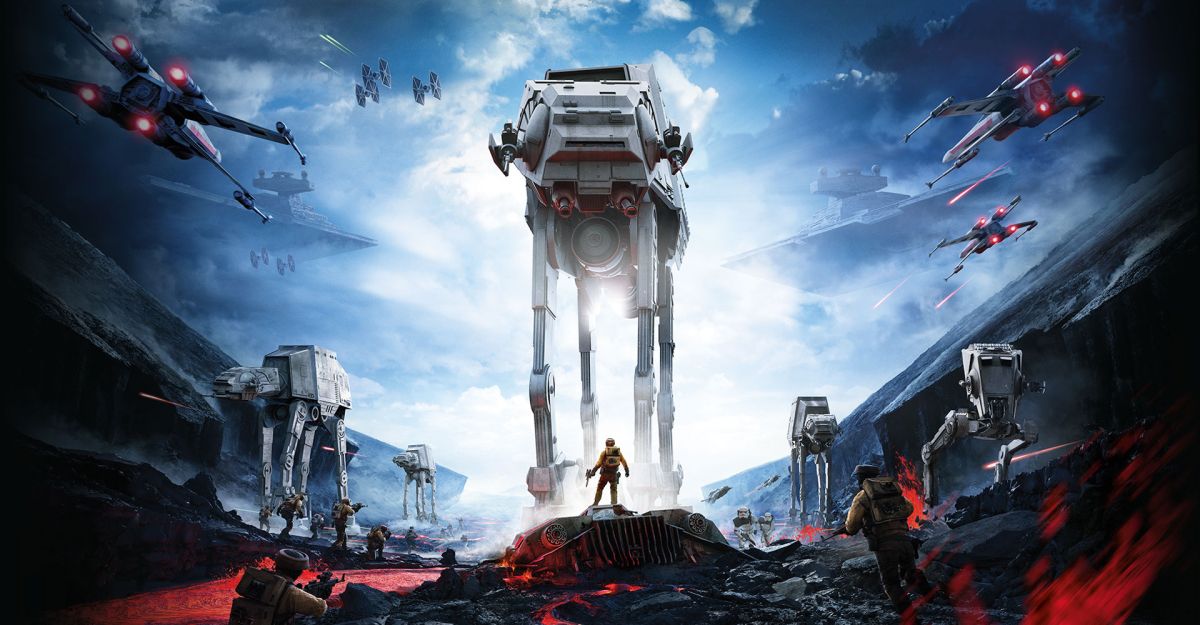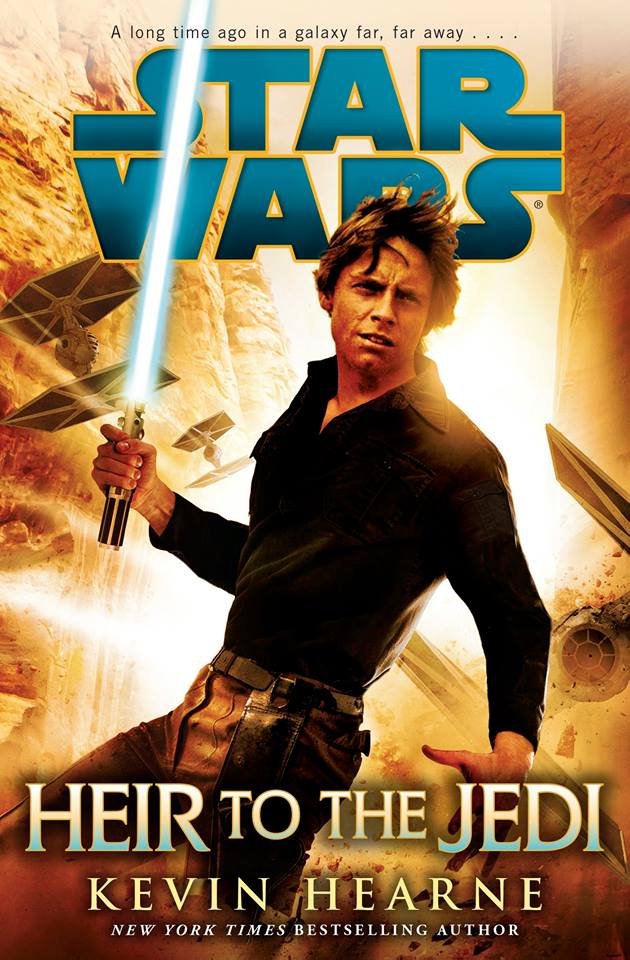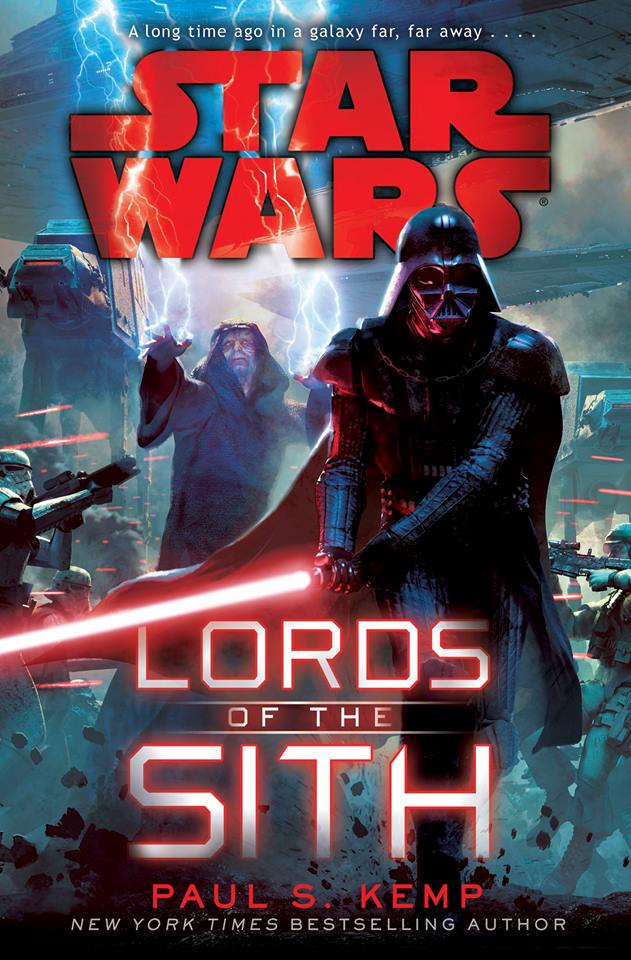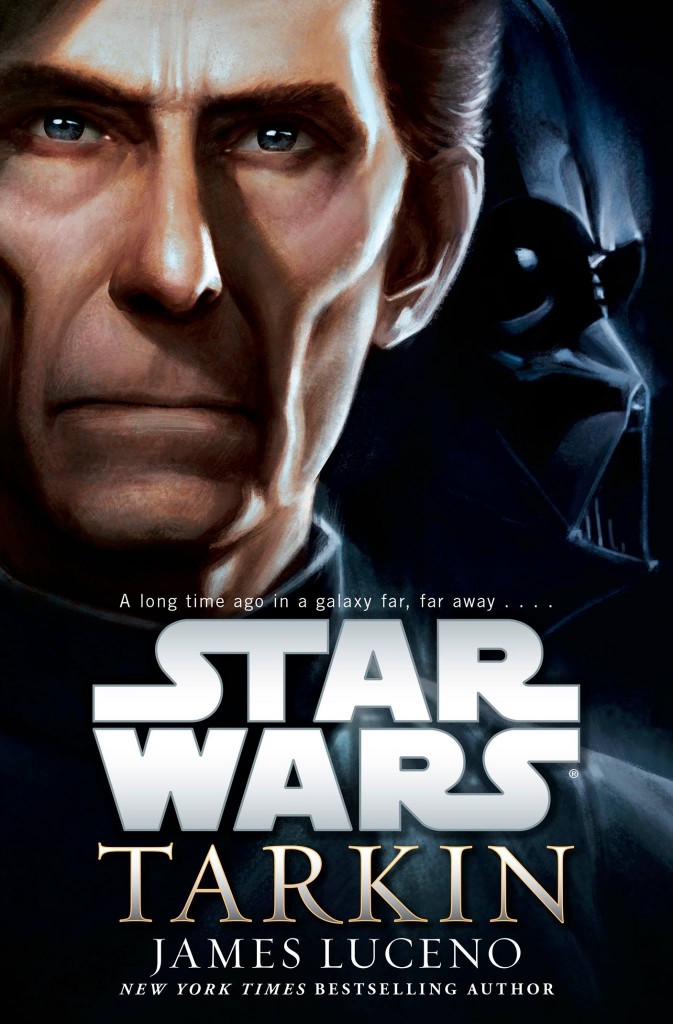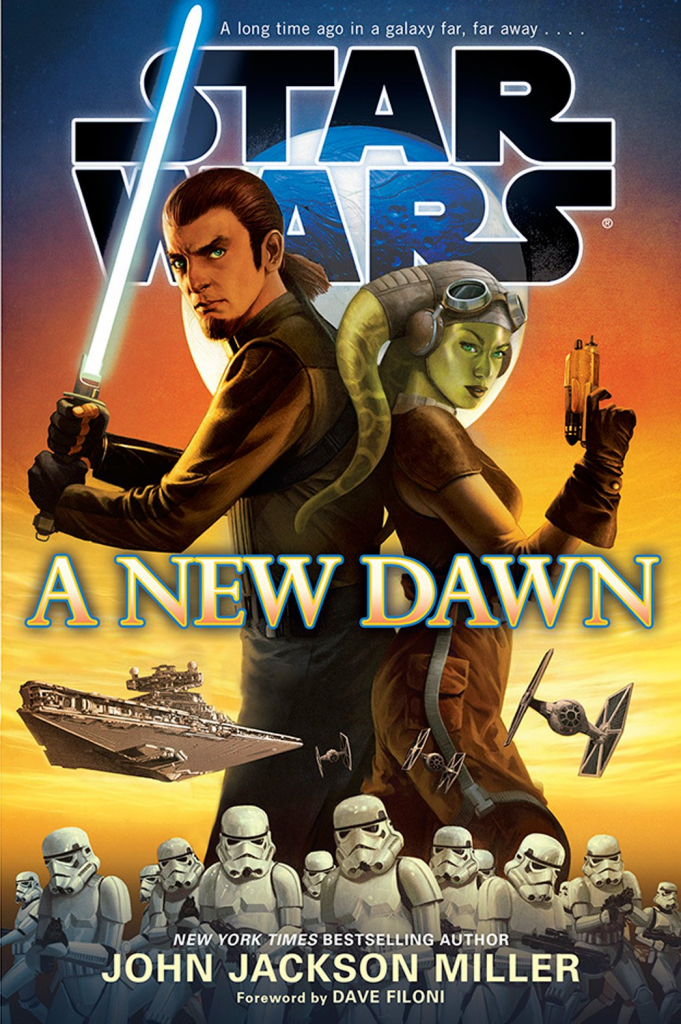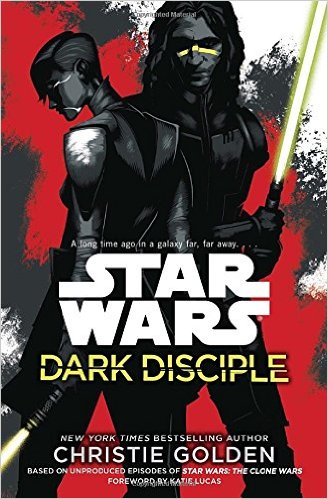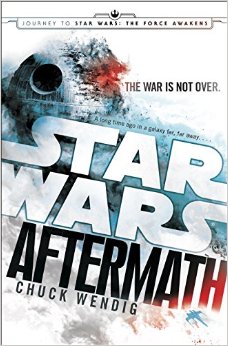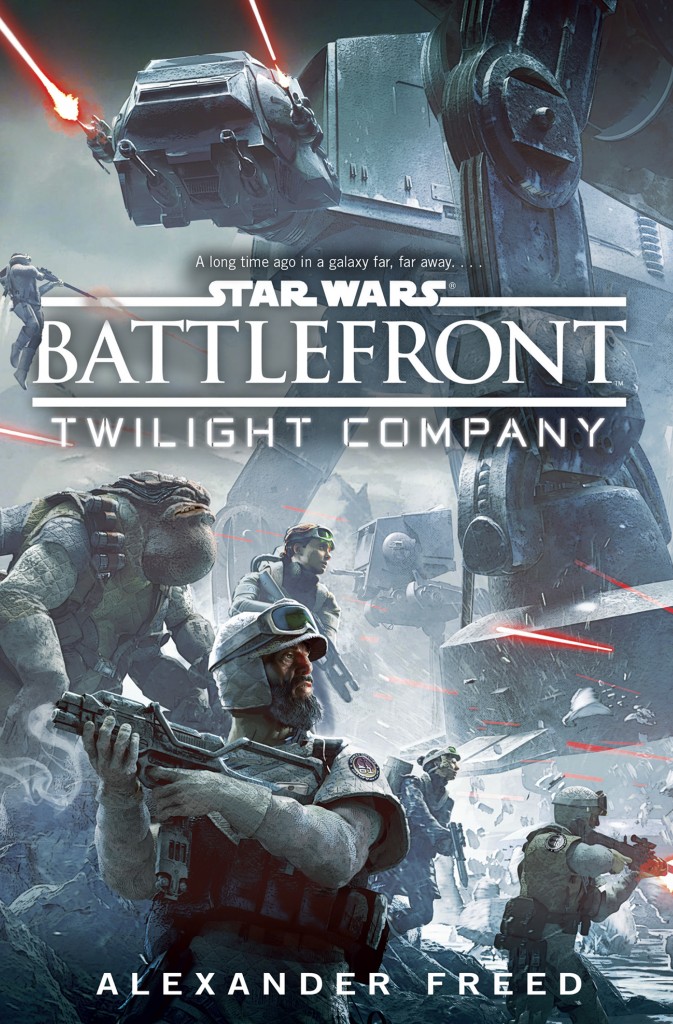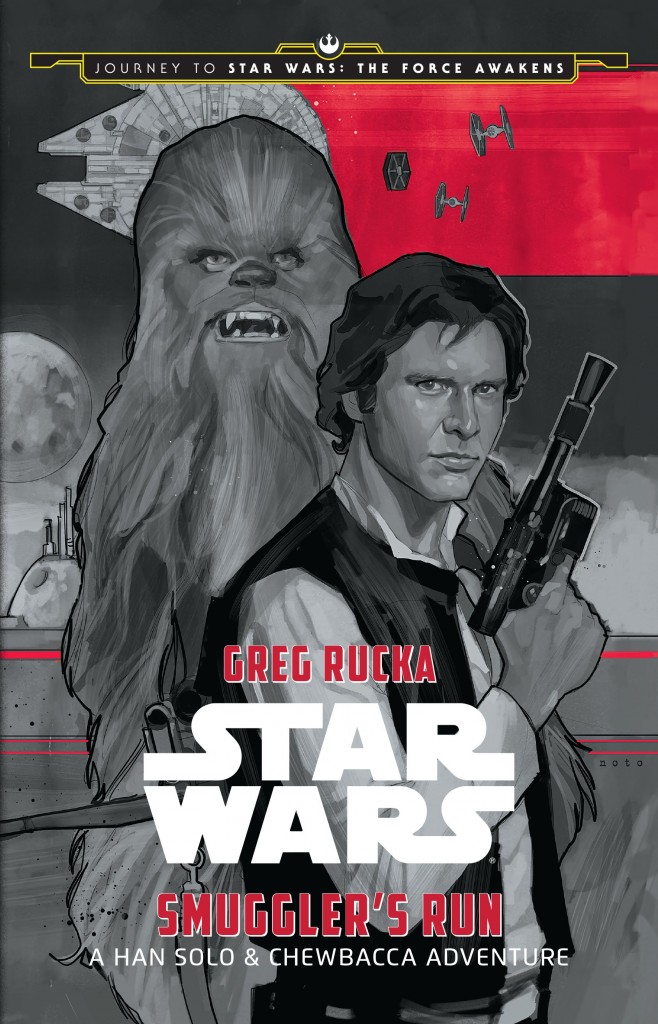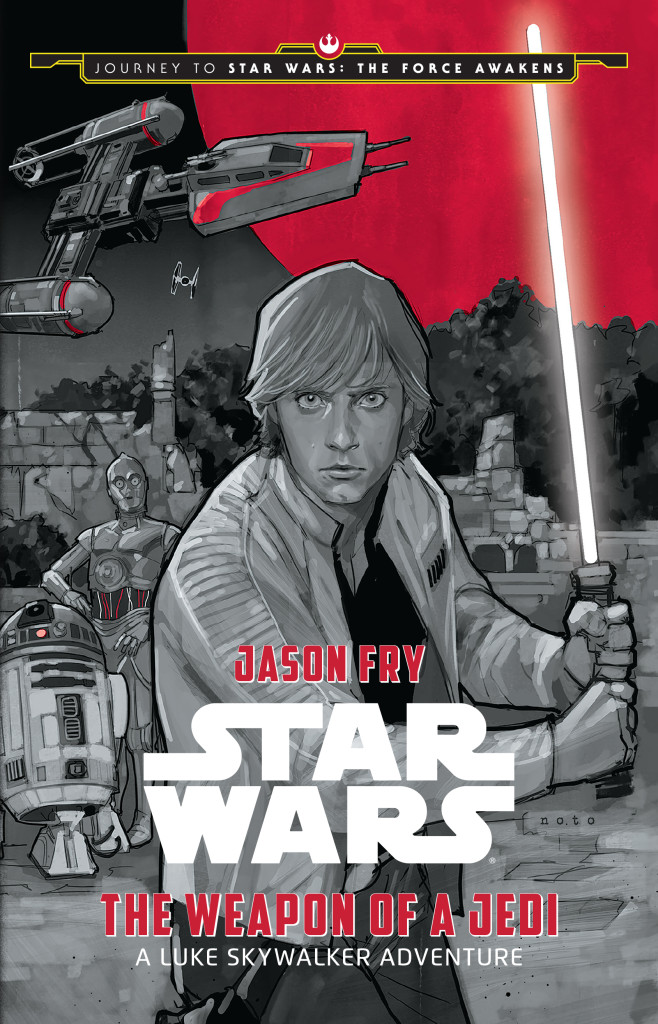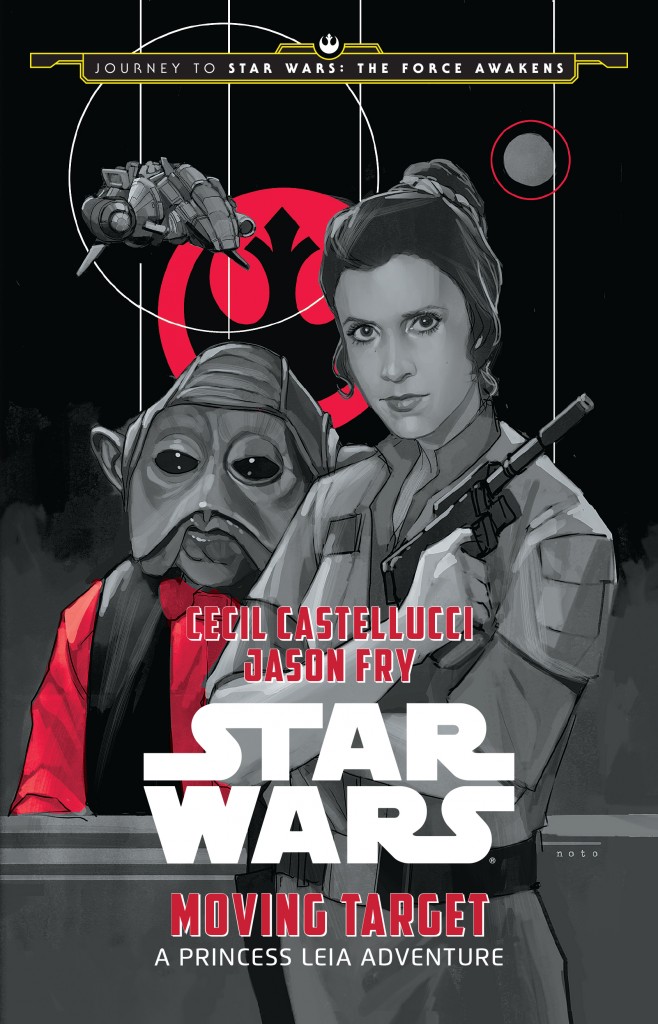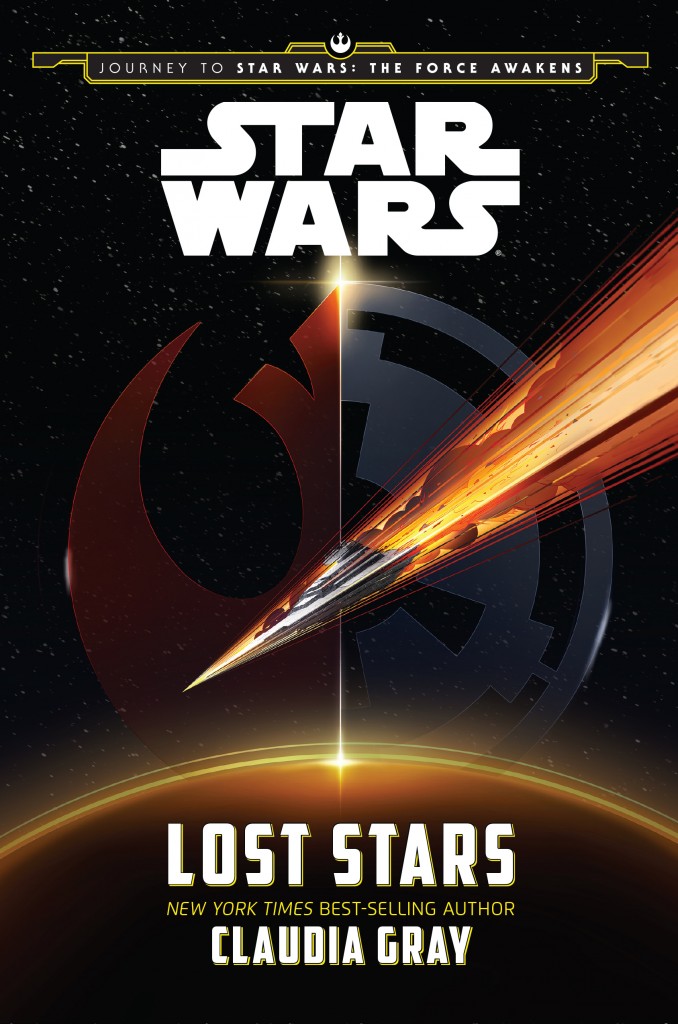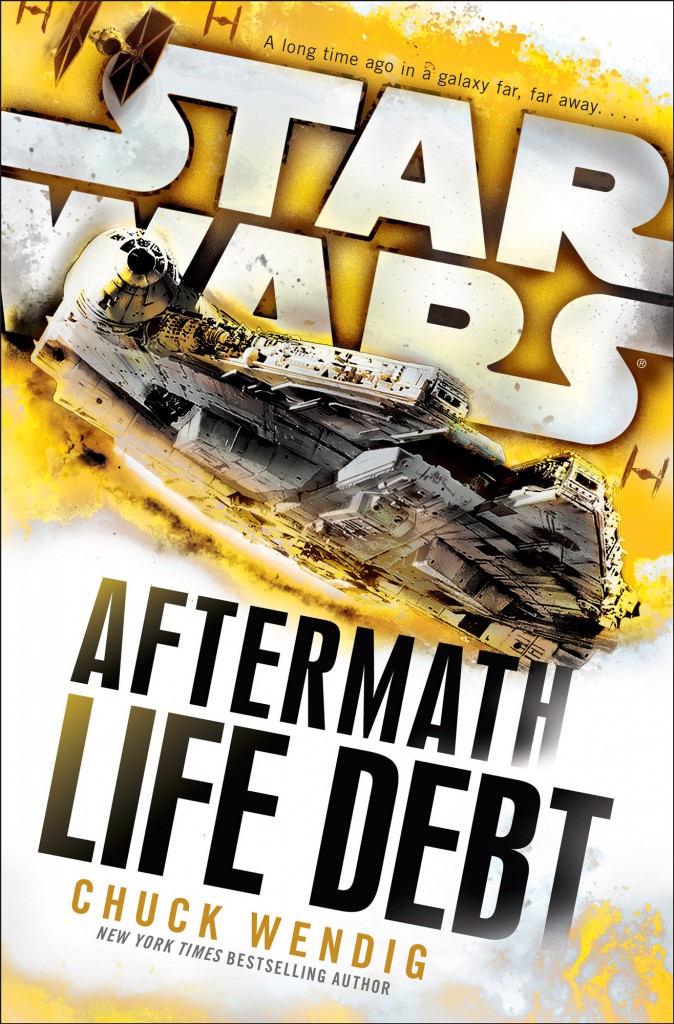This has been a wild year for all fans of Star Wars. While the release of The Force Awakens has been the major focal point, there is no denying that there are other things to be excited about in everyone’s favorite galaxy far far away. Marvel has gotten the rights back to do Star Wars comics from Dark Horse (Marvel and LucasFilm are now both owned by Disney) and a number of authors, old and new alike, have released some impressive novels further fleshing out this universe.
When Disney bought LucasFilm, they abolished the former Expanded Universe of novels, comics, and video games; former novels were rebranded as Star Wars Legends. However, they made an announcement that all other material from here on out WOULD be considered canon, thus wiping the slate clean and starting fresh. The previous EU had become far too bloated, and Lucas even ignored it when he was creating the prequels (not to mention that he himself never considered those stories canon). Thus, despite there being some impressive stories in the old EU (Shadows of the Empire and the Thrawn Trilogy being major examples) this is a good move overall, as it creates a more consistent universe.
Here, we will take a look at all of the new canon Marvel comic series, and the canon novels. This article will tell you where in the canon said story falls, what it is all about, and why you should or should not pick it up.
–PART ONE: THE COMICS–
STAR WARS (ongoing):
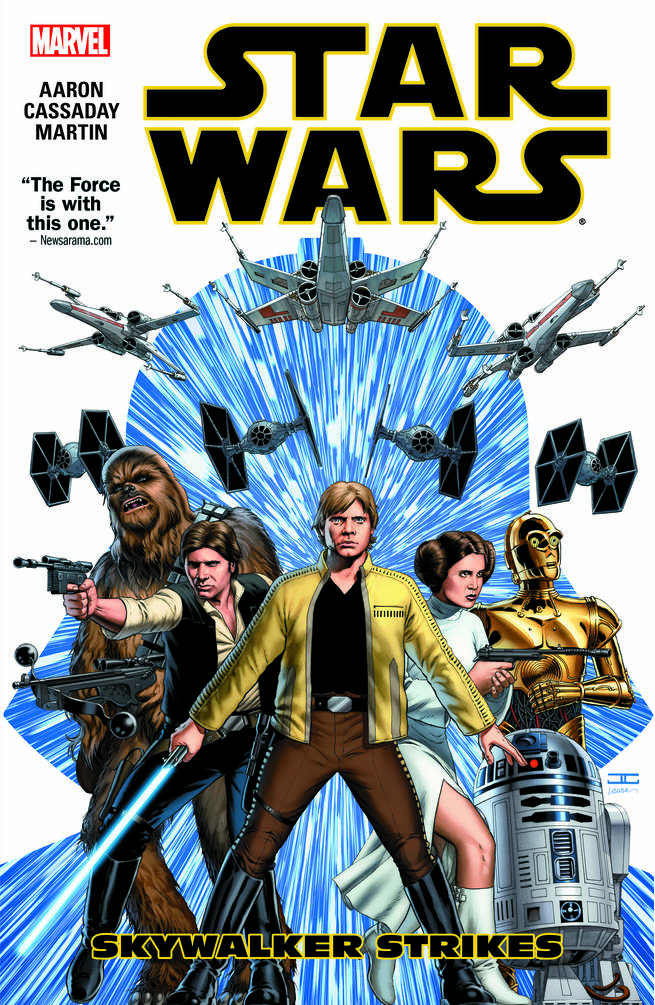
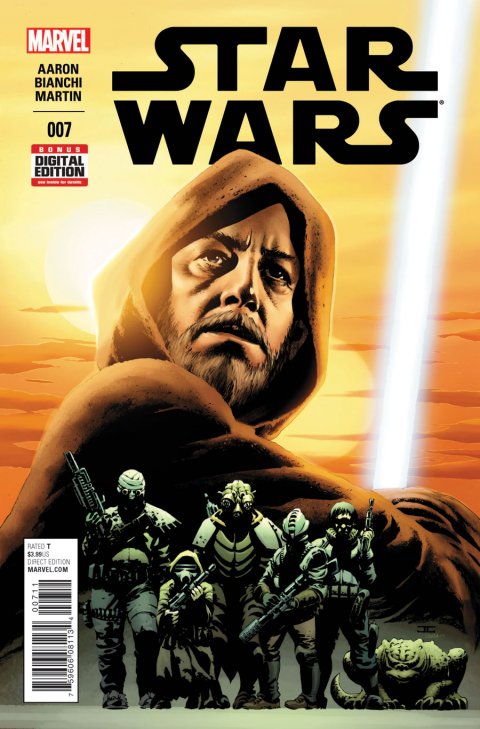
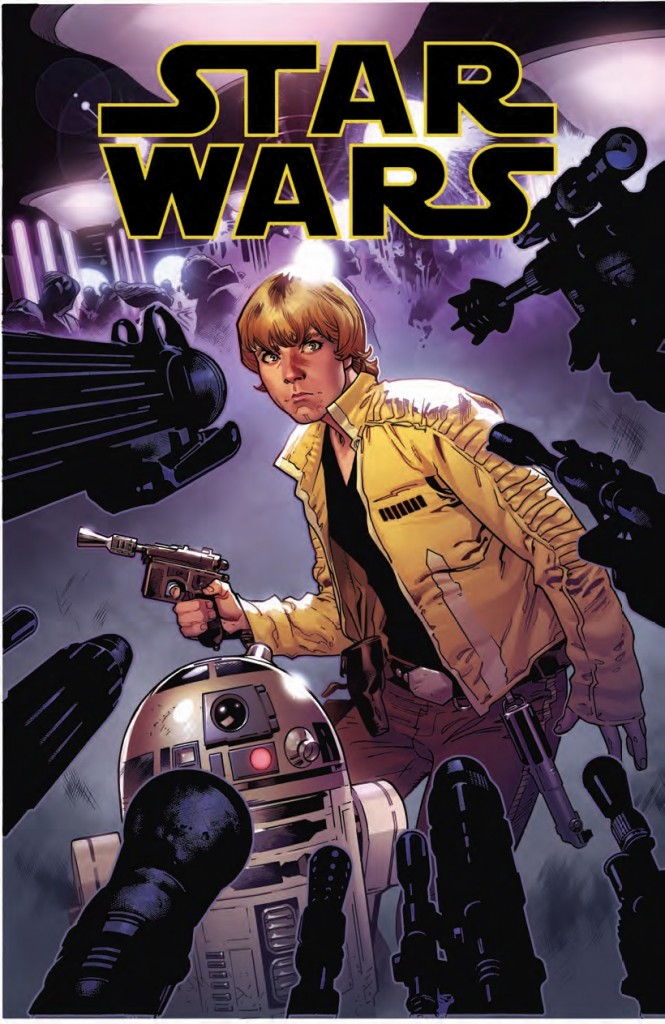
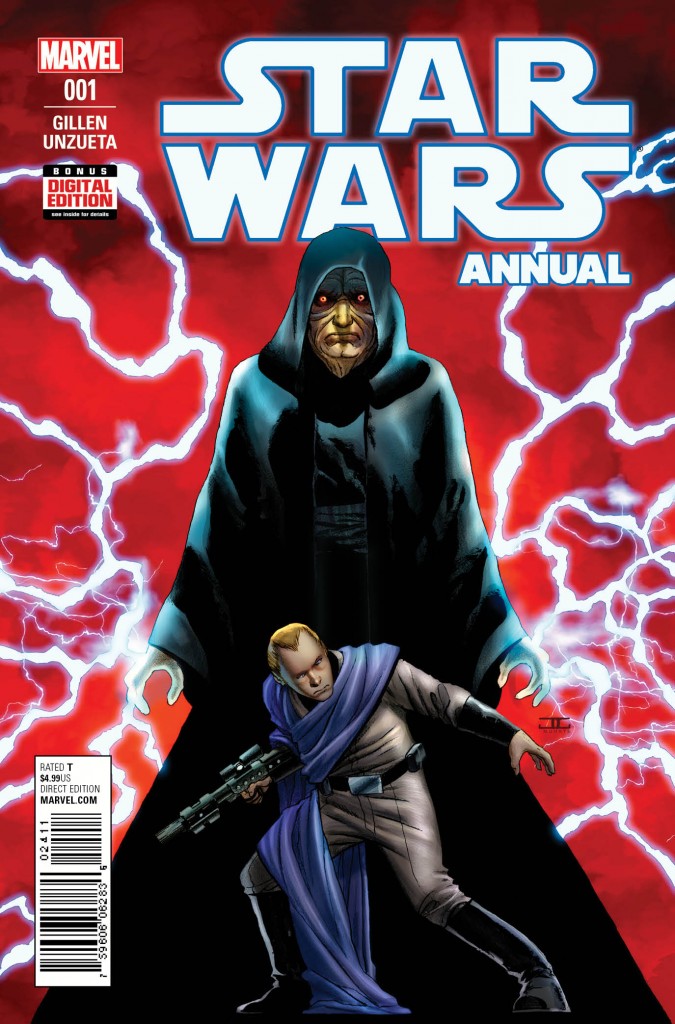
When is it set: Between A New Hope and The Empire Strikes Back, but after the Princess Leia comic, and the Heir to the Jedi, The Weapon of a Jedi, and Smuggler’s Run novels. Takes place concurrently with the Darth Vader comic.
What is it: The main Star Wars comic, this one follows the central cast of Luke Skywalker, Princess Leia, Han Solo, Chewbacca, C-3PO and R2-D2, between the first two movies. The Rebels lead assaults against Imperial vantage points and seek sites for a new base, while Luke tries to further his Jedi training.
Should you read it: Yes. This comic beautifully captures the feel of Star Wars like no comic before. The character personalities and dialogue are absolutely perfect. New characters are kept to a minimum, but when one is introduced they are well fleshed out and serve their purpose well. Humor from the droids, the “love hate” relationship with Han and Leia, Luke as an uncertain youth seeking answers as to becoming a Jedi, it is all here and absolutely perfect. I was hesitant regarding Marvel’s regaining the Star Wars comic license (Dark Horse did a great job for two decades plus), but here they have proven themselves beautifully. It is everything you could want in a Star Wars comic and more.
DARTH VADER (ongoing):
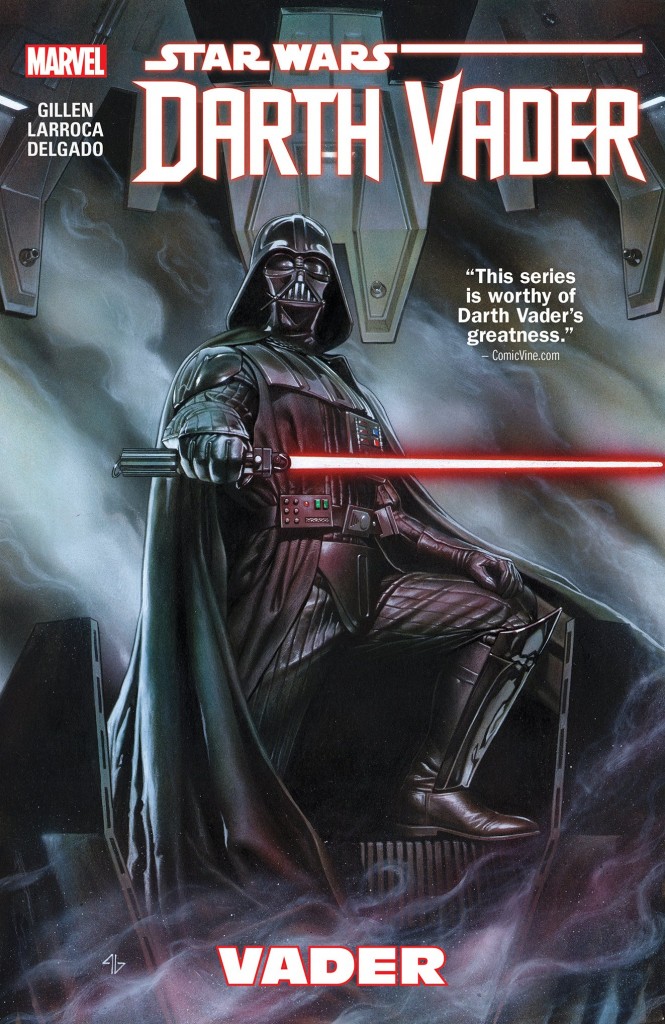
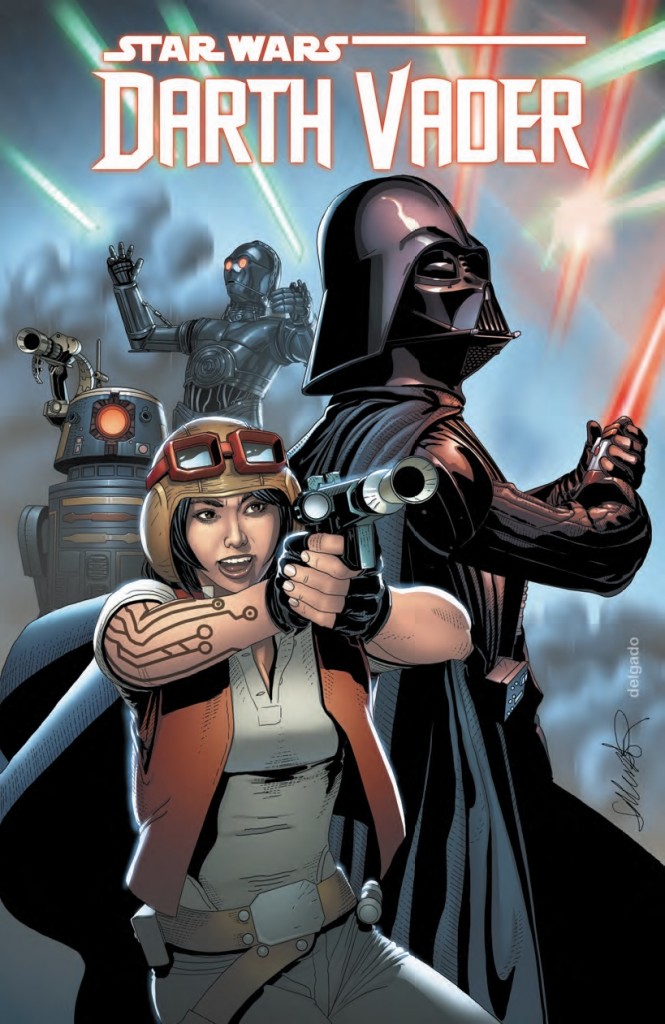
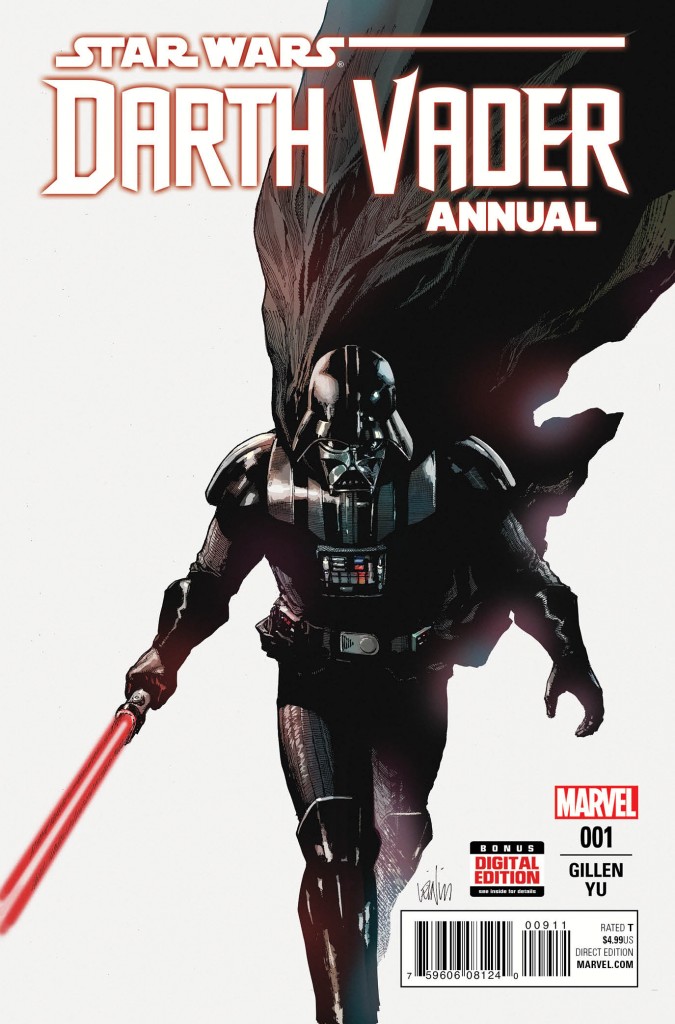
When is it set: Between A New Hope and The Empire Strikes Back, but after the Princess Leia comic, and the Heir to the Jedi, The Weapon of a Jedi, and Smuggler’s Run novels. Takes place concurrently with the main Star Wars comic.
What is it: Following the destruction of the Death Star, an irate Emperor Palpatine has demoted Darth Vader, deeming him responsible for its destruction, promoting General Tagge to become his superior. On a new, more personal mission, Vader recruits the help of a droid archaeologist, and begins plotting his own conquest, as he tries to discover the identity of the Force-sensitive Rebel pilot that destroyed the Death Star.
Should you read it: Yes. Marvel has been on fire with these new Star Wars comics, and this is arguably the finest series. Vader’s brooding personality as a tragic anti-hero is captured well here. Even the new characters introduced get the proper treatment; Aphra the droid archaeologist and her “assassin droid” sidekicks steal the show, and bring some welcome comic relief to an otherwise bleak and often outright dark story. A great mix of action, drama, and suspense come together nicely in Vader’s story; no Star Wars fan will be disappointed.
PRINCESS LEIA (five issue mini series):
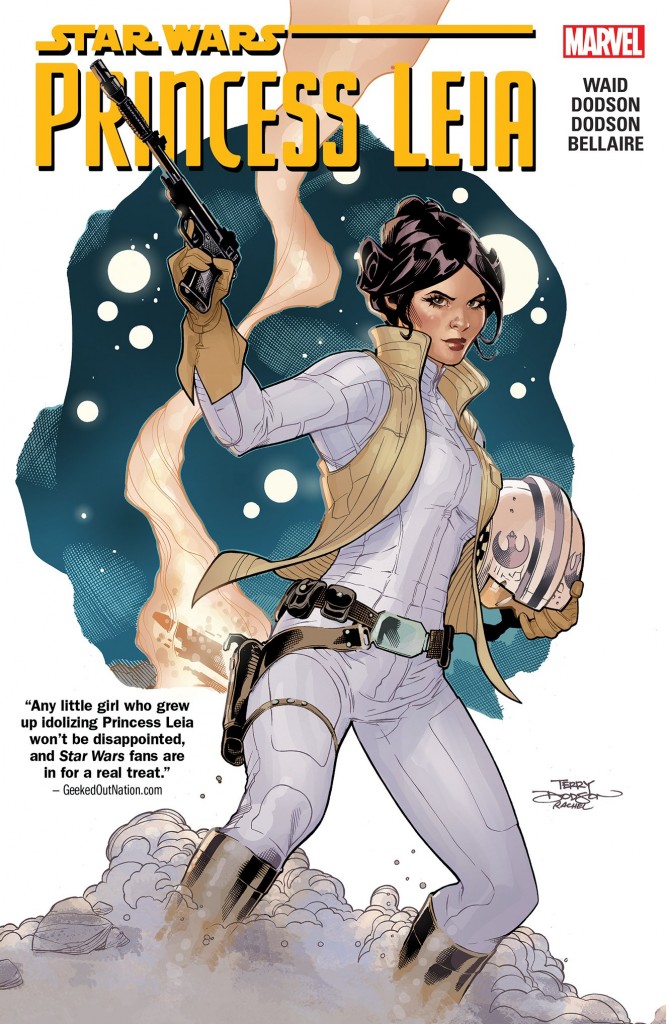
When is it set: Immediately after A New Hope.
What is it: Princess Leia, mourning the loss of Alderaan at the hands of the Empire, sets out on a quest across the galaxy with a Rebel pilot, to bring together survivors of Alderaanian heritage, so that her culture may live on. Of course, the Empire has a bounty out for surviving Alderaanians, and they have the Rebel princess in their sights.
Should you read it: No. This is not a terrible comic and is certainly not without its highlights, but it cannot rise to the heights of most of Marvel’s other recent Star Wars creations. The art style in some places is truly atrocious and laughable, and the story takes its time before it really gets going and becomes interesting; this simply does not work in a comic that only gets to go for five issues. The suspense and drama build in the story’s latter issues, but by this point it is too little too late, and what momentum is picked up by then cannot save the comic. For the biggest of Princess Leia fans only.
KANAN (ongoing):
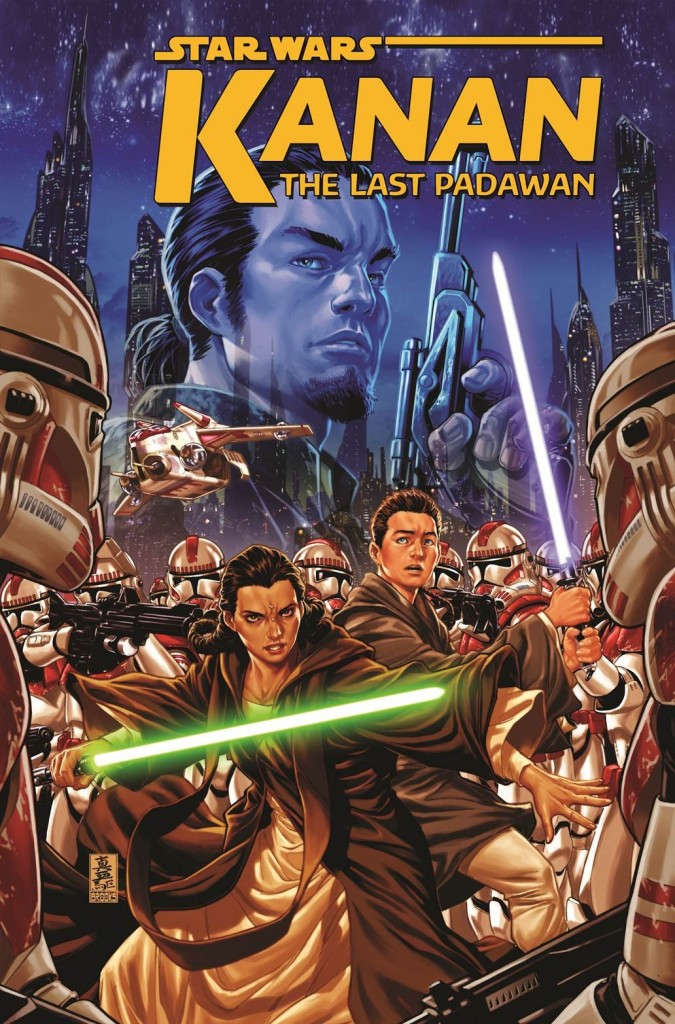
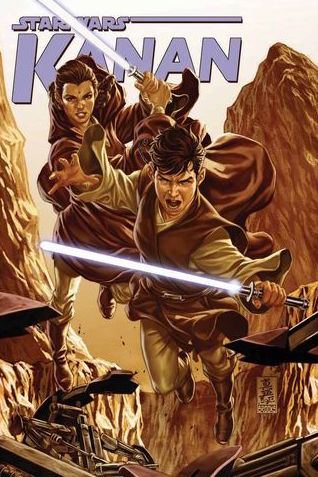
When is it set: The “present” is during the first season of Star Wars Rebels. The main “flashbacks” take place in the period of the Clone Wars, to shortly after Revenge of the Sith.
What is it: This is Kanan Jarrus, the former Jedi Padawan featured on Star Wars Rebels, telling his fellow Rebels about when he was still a Padawan, and on the run across the galaxy, trying to become a man and make it through life in an unforgiving galaxy that was looking to hunt down and kill all of the Jedi.
Should you read it: Yes. Kanan Jarrus is one of the most interesting characters in the new Star Wars continuity, and it is interesting to see the backstory that he has been fleshed out with here. This, in many ways, is darker and more depressing than the other comics, as it is the aftermath of the betrayal of the Republic and the Jedi Knights. Through it all though, we can feel young Kanan’s pain and struggles, which makes these tales all the more poignant. Even if you are not a regular viewer of Star Wars Rebels, this comic is absolutely worth reading.
LANDO (five issue mini series):
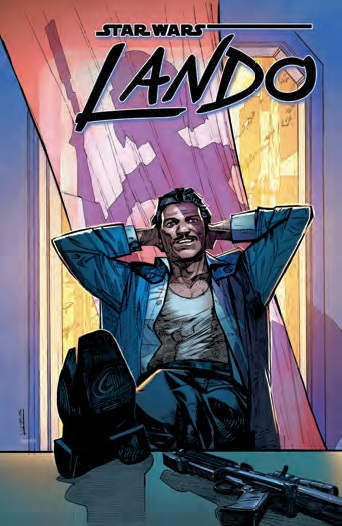
When is it set: Prior to The Empire Strikes Back (how much earlier has not been revealed for certain, so it could be before or after A New Hope).
What is it: Lando Calrissian, in his pre-Empire Strikes Back days, was deep in debt and struggling to pay off old debts. Joining up with a heist team, Lando plans to steal a vintage Imperial ship from a lightly guarded space yard for a crime boss, selling the valuables inside for himself and profiting immensely, thus finding himself able to pay off his debts. But Lando and company are in for a terrible surprise; the ship is the property of a deadly foe, and the treasures within may be equally dangerous to those aboard.
Should you read it: Yes. Lando is a great character, and he gets some much needed further development here. It is interesting to note that even Lobot (AKA Lando’s aide with a Game Boy mounted to his head) gets some much needed character development here he never got on the big screen. There are moral quandaries, action scenes, unexpected plot twists and conflicts, and more than enough going on to keep the attention of any reader. Yet it never feels over the top or contrived either. This comic was one of the truly pleasant surprises amongst Marvel’s new series.
SHATTERED EMPIRE (four issue mini series):
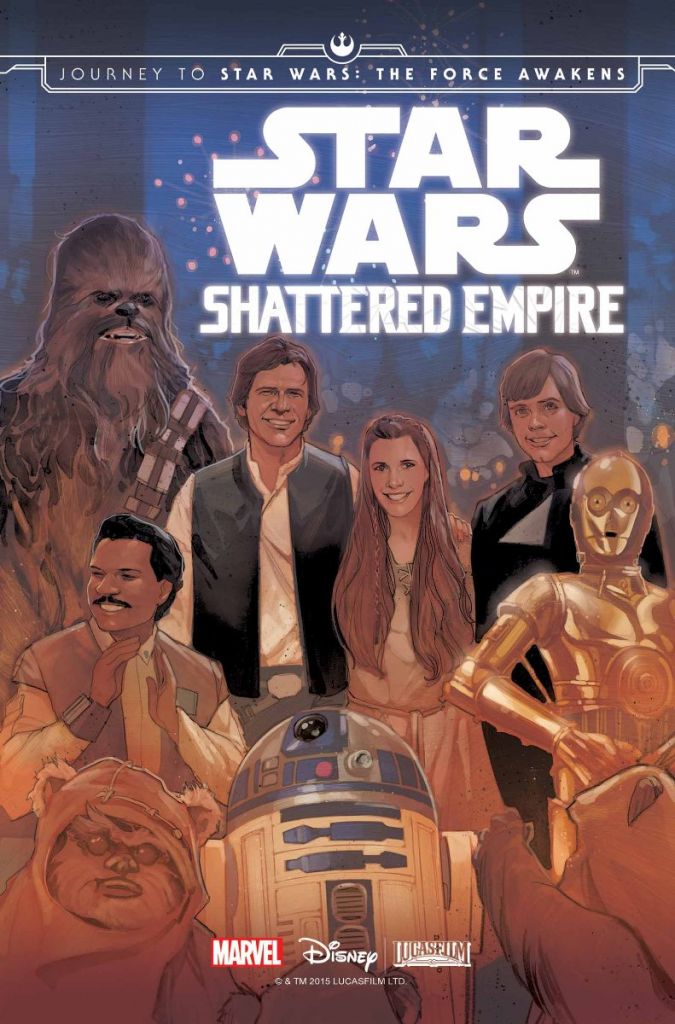
When is it set: Immediately after Return of the Jedi.
What is it: The deaths of Emperor Palpatine and Darth Vader did not spell the end of the Galactic Civil War. Imperials are waging attacks against the New Republic, trying to reclaim their former glory. The New Republic must step up and do battle with this Imperial remnant before any serious harm can come to the galaxy. Classic characters like Princess Leia, Luke Skywalker, and Han Solo are present, along with new faces like Kes Dameron and Shara Bey.
Should you read it: Yes. It is a little disappointing that the series only ran for four issues, because a lot is packed in those pages. One major highlight here is the presence of Kes Dameron and Shara Bay, the parents of Poe Dameron from The Force Awakens. Han and Leia get their chances to shine as well, and even Luke gets to embark on a personal mission. I wish this would have been an ongoing series rather than a four-part mini series; with 30 years between Return of the Jedi and The Force Awakens, the possibilities could have been endless here! That said, I am still strongly recommending it.
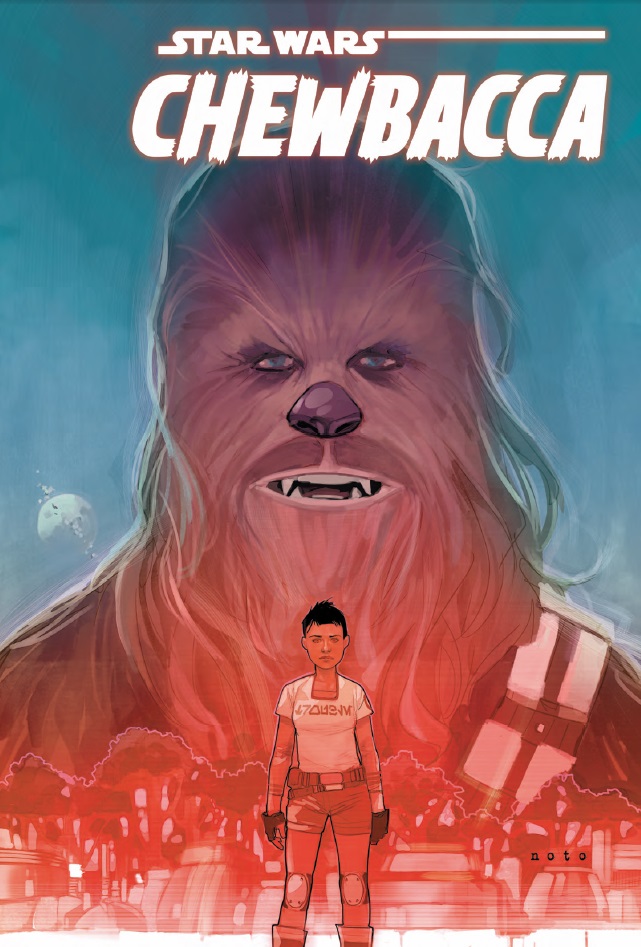
CHEWBACCA:
When is it set: After A New Hope but prior to the Star Wars comic series.
What is it: Chewbacca has issues with his ship while on a mission for the Rebellion, and is forced to land on a planet to make repairs. Once there, he meets up with a young girl who wants his help – their people are being enslaved and made to work in the mines, and the slave driver is selling off the planet to the Empire. It is up to everyone’s favorite Wookiee to step up to the challenge and help his new friend.
Should you read it: No. Chewbacca is a great, beloved character, but my doubts about him being able to carry his own series were proven here. The writers smartly make the move not to translate his “Wookiee speech” and force people to communicate with him “as is,” though. Chewie is more or less a sidekick to Han Solo, and without Han, and thrust in to the starring role, the experience tends to falter. The villains are one dimensional and uninteresting, especially compared to the other comics. Likewise, the art style, while great for droids and ships, is terrible for human characters. Every human character, oddly enough, comes off looking like a Mexican. Zarro, the young girl our Wookiee friend allies himself with, does not even look like a female (it IS possible to create female characters that look both feminine and tomboyish!) While not a “bad” comic, Chewie carrying one on his own just doesn’t quite work, and one-dimensional villains and a bad art style for the human characters does not help things. Pass this one by unless you are a die-hard.
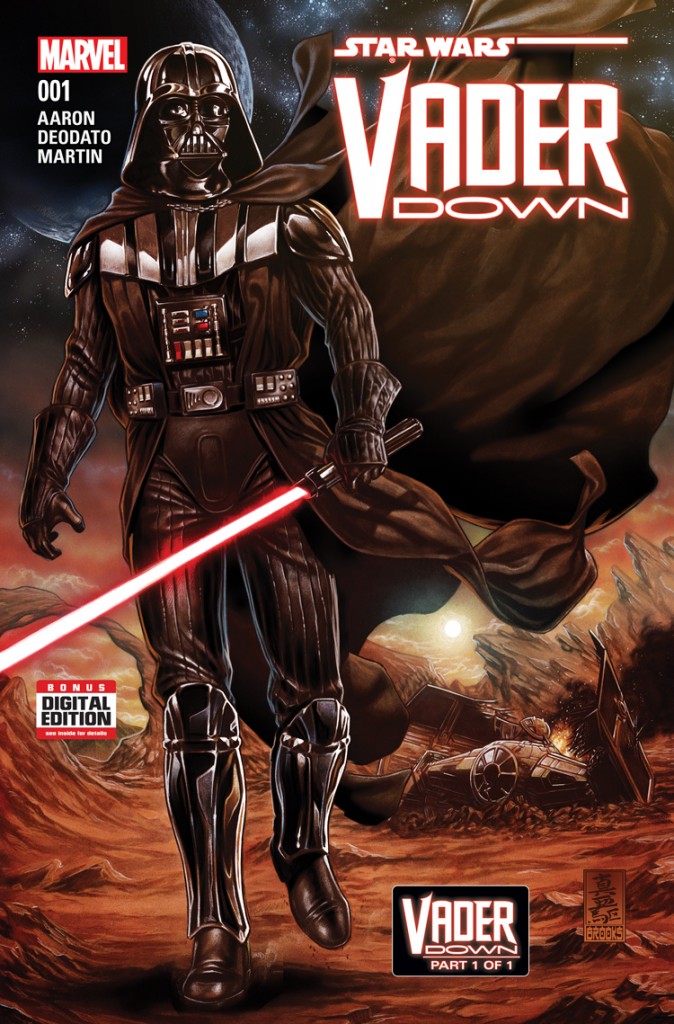
VADER DOWN (six issue mini series):
When is it set: Following the first two story arcs of the Star Wars comic and the first two of the Darth Vader comic.
What is it: A crossover between Star Wars and Darth Vader! Following an ill-fated dogfight in space, Darth Vader finds himself stranded on the planet Vrogas Vas. With the Rebellion having a base there and legions of soldiers, they decide this is the time to take down the Dark Lord of the Sith, once and for all! Of course, Vader is definitely not a force to be taken lightly. Meanwhile, Dr. Aphra and her robots set out on a mission to capture Luke for Vader, and other parties have their eyes on the planet and the prizes as well.
Should you read it: Yes. Take everything that makes both the Star Wars and Darth Vader series great, bring them together where they clash with one another, and you will get just what you want in Vader Down. It is interesting to see the characters from both series finally meet and interact, and the comic does not skimp on the action either. Things get chaotic and deadly for both sides here, and fans are not going to be disappointed.
THE FUTURE:
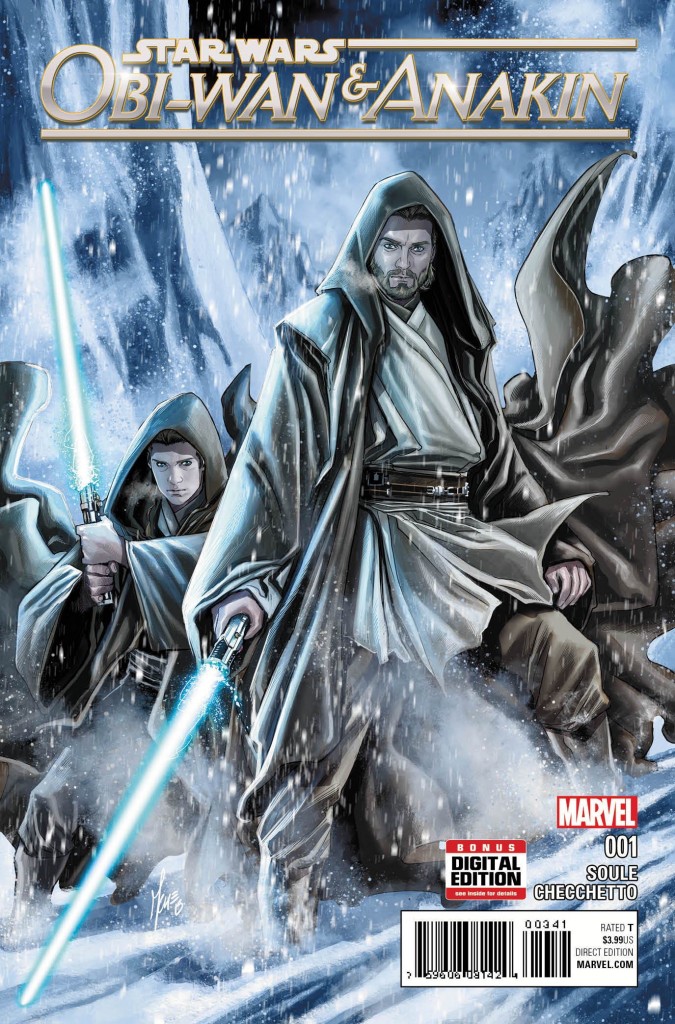
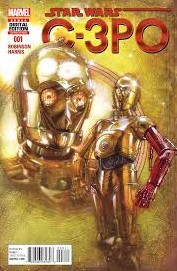
In 2016, Star Wars comics will be continuing with the release of a limited Obi-Wan and Anakin series, set between The Phantom Menace and Attack of the Clones, and a one-shot C-3PO comic, explaining the origin of his red arm in The Force Awakens.
–PART TWO: THE NOVELS–
Heir to the Jedi by Kevin Hearne:
When is it set: Between A New Hope and The Empire Strikes Back. Prior to The Weapon of a Jedi and the Star Wars comic series.
What is it: Following his victory at the Battle of Yavin and the destruction of the Death Star, Luke teams up with a female associate of the Rebellion, as they try to set out to gain new allies and technology that they use in their battles against the Empire.
Should you read it: No. This is one of the most poorly written Star Wars novels I have ever read. Many plot points are developed and quickly set aside in favor of scenes of Luke and his new female ally EATING. No, I am not making this up, but I wish I was. The “gimmick” here is the first person perspective, but Hearne writes it just like third-person omnipotent narration, to the point that it would more or less be interchangeable with a standard narrative. The Weapon of a Jedi, a young adult novel released some time after this one, does a much better job writing Luke and developing him as a fledgling Jedi. Read that instead.
Lords of the Sith by Paul S. Kemp:
When is it set: Roughly five years after Revenge of the Sith, but prior to the Tarkin novel.
What is it: Twi’lek Rebel leader Cham Syndulla sets a trap for Darth Vader and Emperor Palpatine, who are visiting the planet upon hearing of restlessness and uprisings against the Empire. When the villainous Sith Lords are shot down and stranded in an unforgiving and harsh environment, they must put their skills to the test against cunning Rebels and deadly beasts.
Should you read it: Yes. Although the title of this book is somewhat misleading and a few scenes do run overlong (the book focuses more on the Ryloth Rebels than Vader and Palpatine), it features some amazing scenes and memorable characters. The Rebels are well written, and Vader and Palpatine are a force to be reckoned with. Minor flaws aside, this one is definitely worth reading.
Tarkin by James Luceno:
When is it set: In the years following Revenge of the Sith, and after the Lords of the Sith novel.
What is it: When Grand Moff Tarkin and Darth Vader are sent to a planet on a mission, Tarkin’s signature, custom flagship is stolen. Vader and Tarkin must pool their resources and their knowledge get it back from the thieves. The book also explores Tarkin’s youth, and how he grew into the powerful Imperial leader that he became.
Should you read it: Yes. Tarkin has long been a fan favorite character despite only appearing in a substantial role in A New Hope, where he was played brilliantly by the late, great Peter Cushing. At first glance, a plot about Tarkin having to recover a stolen spaceship sounds bland. But Luceno writes and develops the character brilliantly. By far, the best scenes are the ones with interchanges between Tarkin and Vader; Tarkin is one of the few people who seems to have a good idea who Vader really us beneath that mask, and who he once was. The scenes regarding Tarkin’s past are equally impressive; Luceno has created a memorable story for all Star Wars fans here.
A New Dawn by John Jackson Miller:
When is it set: Prior to A New Hope, and some time before the Star Wars Rebels animated series.
What is it: The Galactic Empire is mining resources from a distant world. Kanan Jarrus, a former Jedi Padawan trying to blend in and make his way in the universe, is employed there, hoping to not be discovered. But when the villainous Imperial villain Count Vidian hatches a plot that will result in the destruction of a nearby moon, and the arrival of a young Twi’lek woman waging her own war against the Empire, Kanan must make the decision of whether or not to act against Imperial authorities.
Should you read it: No. Dragging on endlessly, this novel has an interesting enough plot idea, but quickly wears out its welcome. The book is about a hundred pages too long, and if you were looking to bond with Kanan Jarrus and Hera Syndulla, you will be sorely disappointed. Too many other characters become the emphasis on more than a few occasions; the majority of them are bland and one dimensional despite a few that are promising. Count Vidian is an interesting enough villain, but you will wish he was in a better story. Miller is a fantastic Star Wars author, and this book is a rare miss for him. If you want to learn more about Kanan’s past, the Kanan comic series is a far better way to do so.
Dark Disciple by Christie Golden:
When is it set: Following The Clone Wars television series, but prior to Revenge of the Sith.
What is it: Separatist leader Count Dooku is wreaking havoc across the galaxy, leading to the Jedi Council adopting a highly unorthodox strategy, plotting to assassinate the villainous former Jedi. Jedi Master Quinlan Vos is sent to enter into an uneasy partnership with Dooku’s former apprentice Asajj Ventress. Before long the two develop a bond despite their past histories being at odds with one another. It is up to the unlikely alliance to collaborate and kill Dooku, before he can cause the deaths of any more innocent lives.
Should you read it: Yes. The Clone Wars animated series did not give fan favorite character Asajj Ventress a proper send-off due to its premature cancellation; this novel was adapted from a story arc that would have done so, had it been produced. It also revisits the Quinlan Vos character, who the animated series criminally underused. While there are limitations that do hamper the experience somewhat, this is a surprisingly good novel that more than does justice to its featured characters. Fans should be impressed.
Aftermath by Chuck Wendig:
When is it set: In the time period following Return of the Jedi.
What is it: Darth Vader and Emperor Palpatine are dead, but the Galactic Civil War is far from over. Surviving Imperials are convening and pooling their resources on a distant planet, so that they may strike pack at the New Republic that has pushed them back and scattered their numbers. It is up to a number of heroes, old and new alike, to prevent the Empire from regaining its former glory. In addition to the normal narrative, there are short vignettes detailing life around the galaxy following the formation of the New Republic.
Should you read it: Yes. This novel was immediately harpooned upon its release for a number of elements, but this fans believes those reviews were far too harsh. While there are too many characters and subplots, at large this post-Return of the Jedi is surprisingly good. Some of the new characters are memorable and have me eager for the forthcoming sequel novel. A cliffhanger ending beautifully builds the suspense in that same regard. Admittedly, this one is not going to be for everyone. I recommend it despite its flaws; it is not the best Star Wars novel, but is also nowhere near as bad as some reviews would lead you to believe.
Battlefront: Twilight Company by Alexander Freed:
When is it set: Prior to, concurrently with, and after the Battle of Hoth depicted in The Empire Strikes Back.
What is it: This novel follows the exploits of a Rebel Alliance brigade of unorthodox foot soldiers, as they travel from world to world, waging war against the Galactic Empire. When the group is joined by a high ranking woman deserting the Empire, they gain an edge and begin plotting new strategies. The story also follows the patrols of a female Stormtrooper, and a pair of high ranking Imperials and their mission against the Rebel squadrons.
Should you read it: Yes. Twilight Company scores major points because it is unlike any other Star Wars novel, focusing on regular soldiers of the war, rather than Jedi and Sith characters. This creates a more suspenseful story, and the casualties on both sides definitely leave an impact on the reader; this is largely because these are new characters and their fates are not pre-determined as with the “familiar” fan favorite types. It is a different kind of Star Wars story, but in a surprisingly good and refreshing way, even if some of the side stories do come off as a little undeveloped compared to the central plot. Still, it garners a strong recommendation.
Smuggler’s Run by Greg Rucka:
When is it set: Following A New Hope but prior to the Star Wars comic series.
What is it: Han Solo and Chewbacca have played a role in destroying the Death Star and combating the Galactic Empire, but are still debating if they want a future with the Rebellion. Despite this, the two go on a mission from Princess Leia, to retrieve a Rebel scout from a world populated by criminals and deviants. But their mission will not be easy; an Imperial Services Bureau agent is hot on their trail.
Should you read it: Yes. Han Solo has always been my favorite character of the “big three” from the original Star Wars movies, and there is some interesting development here. Rucka writes everyone’s favorite scruffy looking nerf herder surprisingly well, and we get some great scenes as a result. There is a nice mix of action and drama here, and the result is a good book. Han Solo fans should be satisfied with what they get in this novel.
The Weapon of a Jedi by Jason Fry:
When is it set: Following A New Hope and the Heir to the Jedi novel but prior to the Star Wars comic series.
What is it: Following his ship being damaged on a Rebel Alliance mission, Luke Skywalker lands his vehicle on the planet Devaron. He continues to receive visions of what he believes is a lost Jedi temple, and tries to get help from the locals to find this place, so he can continue his training. Unfortunately, Luke’s guide is not all that he seems to be at first glance, so it may be up to one of the friendly locals to help our favorite Jedi in training to come out on top, and escape with his life.
Should you read it: Yes. Even though billed as a “young adult” novel, this is a far better Luke-centric novel than Heir to the Jedi. We actually get development for Luke as a Jedi in training, and it is a much more focused and concise novel than that prior Luke tale. The villain, if he can be called that, comes off as underdeveloped, and the climax is a little disappointing in that regard. But this is a “developing Luke” novel first and action one second. It does what it sets out to do quite well, and for that reason, comes recommended.
Moving Target by Cecil Castellucci and Jason Fry:
When is it set: Between The Empire Strikes Back and Return of the Jedi.
What is it: Following the events of The Empire Strikes Back, Princess Leia sets out on a mission with a Rebel team, setting up homing beacons in an effort to divert Imperials; it has recently been discovered that the Empire is working on a second Death Star. Along the way, Leia bonds with her team, and they become unlikely friends and allies. But our favorite Princess of Alderaan has to struggle with the burden or whether or not to reveal the true nature of the mission to her team, and the consequences that could arise should something go wrong.
Should you read it: Yes. Princess Leia has been a compelling character since she first appeared on the big screen way back in 1977, and when she is written and developed well, it makes for some of the best drama in our favorite galaxy far far away. Leia is written well here, and it makes for a fantastic, concise novel. Even Leia’s team members all become compelling, multidimensional characters. As a whole, the novel works well for these very reasons. Fans should love what they read here.
Lost Stars by Claudia Gray:
When is it set: A time period that starts roughly a decade before A New Hope, and ends a year after Return of the Jedi.
What is it: Spanning the Galactic Civil War, this novel follows the exploits of Ciena Ree and Thane Kyrell, two youths from different lifestyles on a backwater planet that is incorporated by the Empire. The two pursue studies at the Imperial Academy on Coruscant, but over time they are divided by differences in their beliefs, with Thane defecting to the Rebellion, and Ciena remaining loyal to the Empire where she rises through the ranks. Throughout the years, the two play a role in nearly every major battle in the Galactic Civil War, and beyond, crossing paths in often unexpected ways.
Should you read it: Yes. Like a number of people, I was ready to write this one off due to descriptions that compared it to Romeo and Juliet and Twilight. Rest assured, these comparisons are dead wrong. Yes, there is something of a “star crossed lovers” plot here, but this is classic Star Wars at its best. It is a great story with well developed characters, and you will see familiar faces on both sides of the conflict. All of the elements come together nicely; despite its “young adult” branding this is actually one of the best Star Wars novels I have ever read.
Before the Awakening by Greg Rucka:
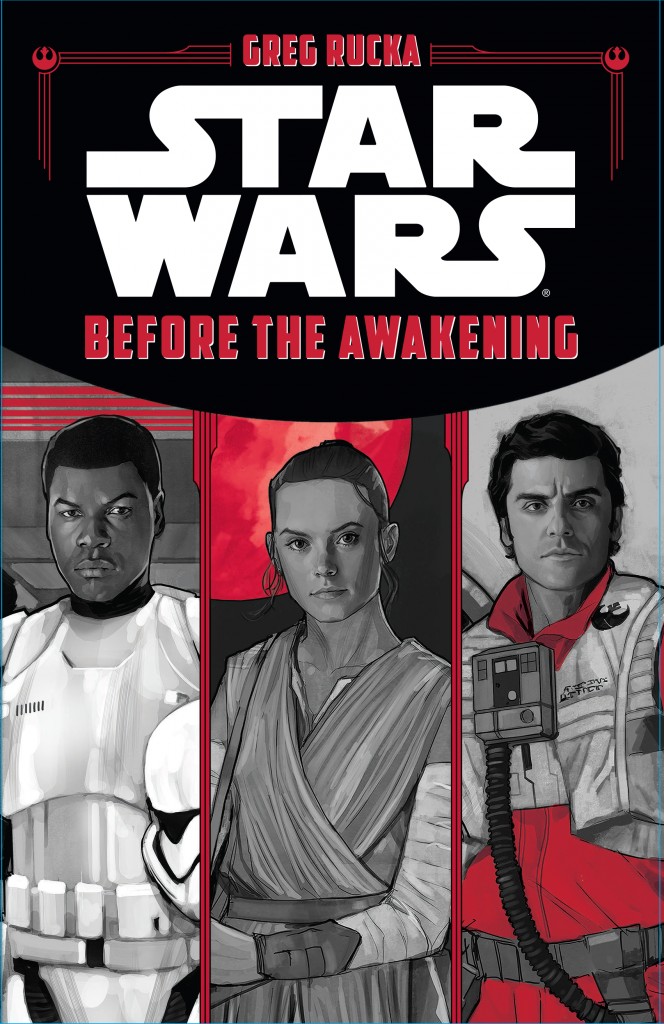
When is it set: Immediately prior to The Force Awakens.
What is it: An anthology of three stories detailing the lives of Finn, Rey, and Poe Dameron prior to the events of Star Wars Episode VII: The Force Awakens.
Should you read it: Yes. The Force Awakens introduced fans to a new generation of Star Wars heroes, and it is great to have a new novel that further fleshes out these characters. The stories are longer and have more substance than “short stories,” but it is not like a full novel for each character either. As such, all of the stories are just the right length, and do their job perfectly. The tales do not lack substance, but do not outstay their welcome either. As such, they are all essential reading for any fan of The Force Awakens.
THE FUTURE:
Chuck Wendig’s Aftermath Trilogy will continue with the release of Aftermath: Life Debt, and Claudia Gray (who wrote the aforementioned Lost Stars) will be putting out a New Republic novel.
Star Wars mania shows no signs of letting down, and with the Rogue One anthology movie set for release in December 2016, plus a myriad of new comics and novels on the way, fans are going to have plenty to look forward to in the new year.
The Force is most definitely with us.

